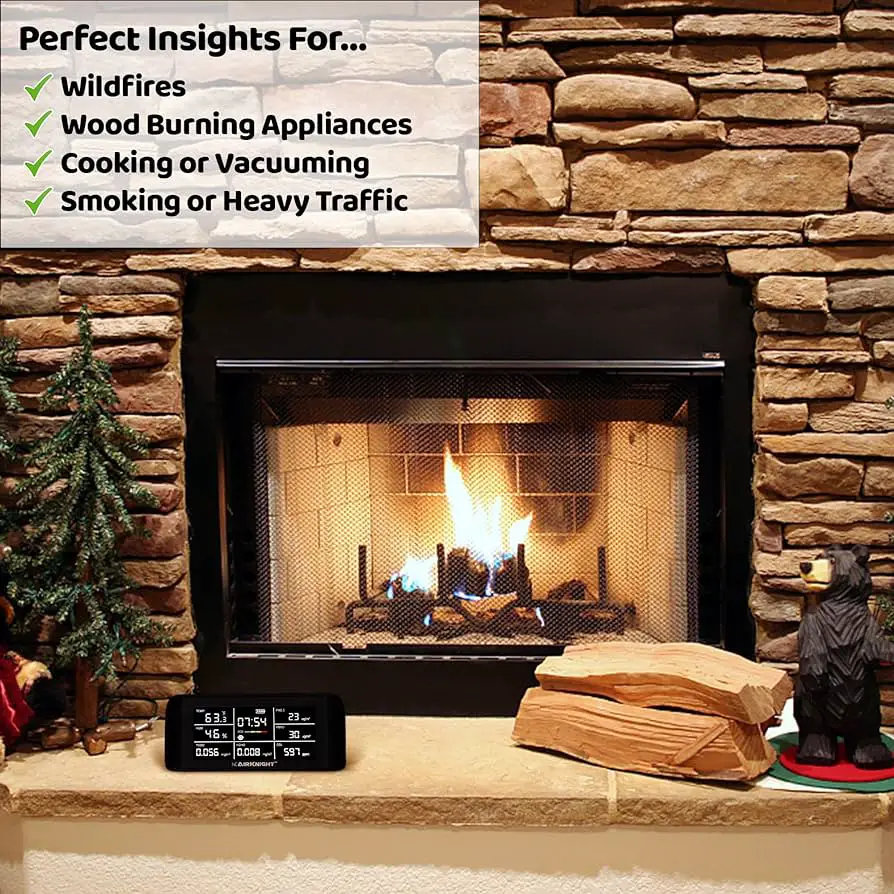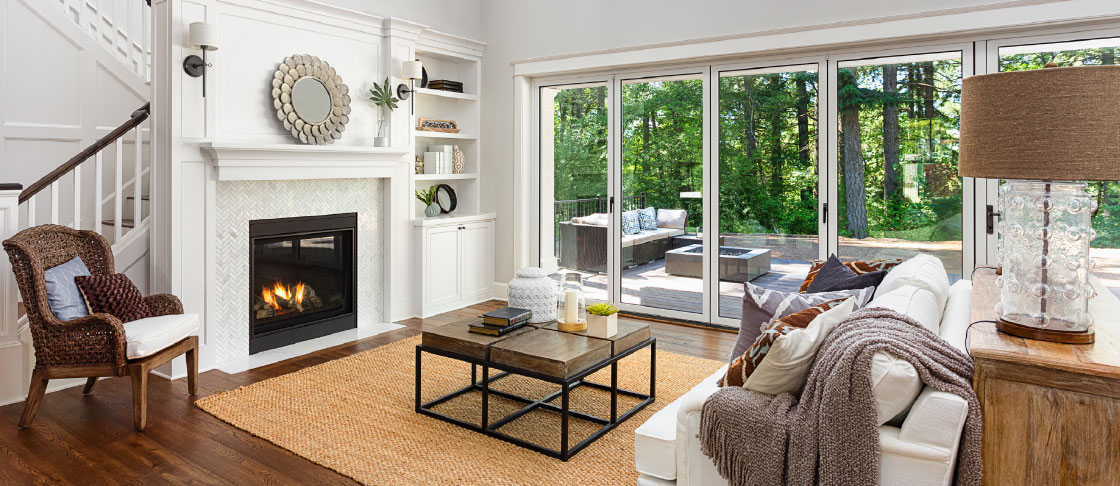Burning wood in a gas fireplace can be dangerous and lead to fires or carbon monoxide poisoning. It can also damage the gas fireplace components.
A gas fireplace is designed to burn gas efficiently, not wood. Using wood can create a buildup of creosote, a flammable substance that can increase the risk of a chimney fire. Additionally, wood burning can produce soot and ash that may clog the gas fireplace vents and affect its performance.
It is important to follow the manufacturer’s instructions and only burn appropriate materials in a gas fireplace to ensure safe operation and longevity of the unit.


Credit: www.amazon.com
The Science Of Wood Burning
Burning wood in a gas fireplace can lead to unexpected consequences due to the Combustion Process and various Chemical Reactions involved.
Combustion Process
The process of burning wood in a gas fireplace involves the release of heat and light through combustion.
Chemical Reactions
- During wood burning, complex chemical reactions take place, transforming the wood into heat, ash, and gas.
- The primary reactions involved are oxidation, pyrolysis, and gasification.
Gas Fireplace Mechanism
How Gas Fireplaces Work
Gas fireplaces operate by burning natural gas or propane to produce heat, similar to a traditional wood-burning fireplace.
This gas is ignited by a pilot light or electronic ignition system, creating flames that heat metal tubes or ceramic logs to radiate warmth.
Efficiency And Environmental Impact
- Gas fireplaces are highly efficient, converting over 70% of their fuel to heat.
- They produce fewer emissions than wood-burning fireplaces, reducing environmental impact.
- This results in cleaner air and lower carbon footprint compared to wood-burning counterparts.
Effects Of Burning Wood In A Gas Fireplace
When it comes to using a gas fireplace, it’s important to be aware of the effects of burning wood in a gas fireplace. While traditional wood-burning fireplaces are designed to handle the by-products of wood combustion, using wood in a gas fireplace can lead to various issues.
Air Quality Concerns
Burning wood in a gas fireplace can significantly impact indoor air quality. Wood burning releases harmful pollutants, such as carbon monoxide, nitrogen oxides, and volatile organic compounds, into the air. These pollutants can cause respiratory problems and worsen existing health conditions, especially for individuals with asthma or allergies.
Creosote Build-up
One of the major concerns of burning wood in a gas fireplace is the potential for creosote build-up. Creosote is a highly flammable substance that can accumulate in the chimney and venting system, posing a serious fire hazard. Using unseasoned wood or wood with high moisture content can accelerate creosote formation, further increasing the risk of chimney fires.

Credit: gvfire.org
Safety Measures And Best Practices
When it comes to operating a gas fireplace, it is crucial to prioritize safety measures and follow best practices. This ensures not only the longevity and efficiency of your fireplace but also the safety of you and your loved ones. In this section, we will discuss two vital aspects: Regular Maintenance and Proper Ventilation.
Regular Maintenance
Maintaining your gas fireplace regularly is essential to keep it running smoothly and safely. Here are some key maintenance tips to follow:
- Ensure the gas fireplace is turned off and cooled down before performing any maintenance tasks.
- Inspect the burner and control compartment for any debris or build-up. Remove any obstructions carefully.
- Check the gas logs for cracks, wear, or damage. Replace them if necessary to prevent potential hazards.
- Clean the glass doors or panels regularly using a non-abrasive cleaner to maintain visibility and improve efficiency.
- Inspect the gas line connections for leaks. Use a solution of soapy water to identify any leaks through the presence of bubbles. If a leak is detected, contact a professional immediately for repairs.
Regular maintenance is essential to keep your gas fireplace operating efficiently and safely.
Proper Ventilation
Proper ventilation is crucial when using a gas fireplace. Here are some best practices to ensure optimal ventilation:
- Ensure the fireplace flue is open before igniting the gas fireplace. This allows for proper airflow and prevents the build-up of harmful gases.
- Regularly inspect and clean the chimney to remove any blockages like nests or debris.
- Install a carbon monoxide detector near your gas fireplace to detect any potential leaks or hazards.
- Avoid blocking the air vents or grills as it can hinder the airflow and affect the performance of the gas fireplace. Keep furniture, drapes, and other objects away from the vents.
Proper ventilation is vital to ensure the safe operation of your gas fireplace and prevent the build-up of harmful gases.
Eco-friendly Alternatives
Burning wood in a gas fireplace can release harmful pollutants. Eco-friendly alternatives include using natural gas or electric fireplaces, which produce fewer emissions and are more sustainable. Opting for these alternatives can help reduce environmental impact and promote a cleaner, healthier living space.
Electric Fireplaces
Electric fireplaces are a fantastic eco-friendly alternative to consider when looking for a greener way to enjoy the warmth and ambiance of a fireplace. These fireplaces use electricity to produce heat and mimic the appearance of a real wood-burning fire, without the harmful emissions or need for wood.
With electric fireplaces, you can easily control the temperature and flame settings to create the perfect cozy atmosphere in your home. They are also incredibly safe to use, as there is no open flame or burning embers that can accidentally ignite nearby objects. Plus, maintenance is a breeze – there is no ash to clean up or creosote buildup to worry about.
Another great advantage of electric fireplaces is their versatility. They come in a wide range of designs and styles, from traditional mantel fireplaces to sleek wall-mounted units, ensuring there is a perfect fit for any home decor. Plus, they can be installed in any room since they don’t require chimneys or vents.
Pellet Stoves
Pellet stoves are another eco-friendly option that provides efficient heating while minimizing environmental impact. These stoves are designed to burn compressed wood pellets, which are made from recycled sawdust and other wood waste materials. By utilizing these pellets, you are effectively reducing waste and utilizing a renewable resource.
The pellets used in these stoves are tightly compacted, resulting in a high heat output and minimal ash production. This means less maintenance and clean-up compared to traditional wood-burning stoves. Additionally, pellet stoves have sophisticated controls that allow you to easily adjust the temperature and ensure optimal efficiency.
What sets pellet stoves apart is their ability to provide consistent heat over an extended period. Many models come with programmable thermostats, timers, and even remote controls for convenience. This makes them a great choice for homeowners who want a reliable and eco-friendly heating solution.

Credit: www.ncrealtors.org
Frequently Asked Questions For What Happens If You Burn Wood In A Gas Fireplace
Can You Burn Wood In A Gas Fireplace?
Yes, it is possible to burn wood in a gas fireplace if it is designed to accommodate wood-burning.
Is Burning Wood In A Gas Fireplace Safe?
No, burning wood in a gas fireplace is not safe as it can cause damage to the fireplace and pose a fire hazard.
What Happens If You Burn Wood In A Gas Fireplace?
If you burn wood in a gas fireplace, it can result in excessive heat, release of toxic gases, and damage to the fireplace’s components.
Can Burning Wood In A Gas Fireplace Affect Indoor Air Quality?
Yes, burning wood in a gas fireplace can negatively impact indoor air quality by releasing pollutants and harmful gases into the room.
How Can I Determine If My Gas Fireplace Is Suitable For Burning Wood?
Consult the manufacturer’s recommendations or contact a professional to assess if your gas fireplace is designed for wood-burning.
Conclusion
Burning wood in a gas fireplace can result in several safety risks and potential damage to your unit. It’s crucial to follow manufacturer guidelines and only use approved materials to maintain a safe and efficient fireplace. By understanding the consequences, you can make informed decisions and enjoy your fireplace responsibly.
